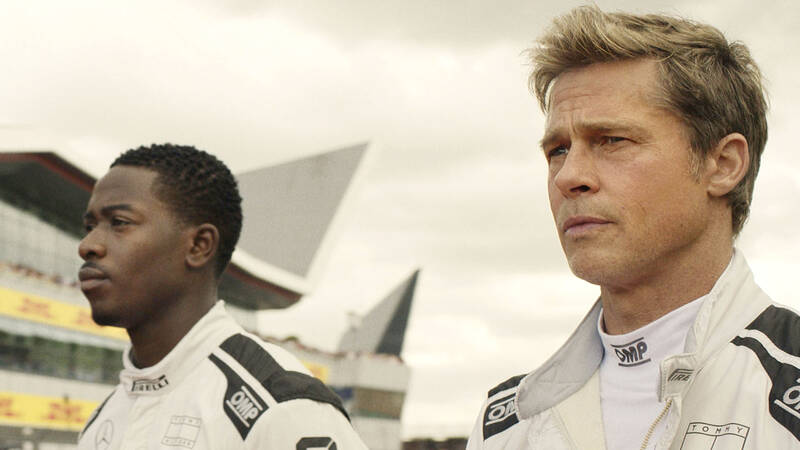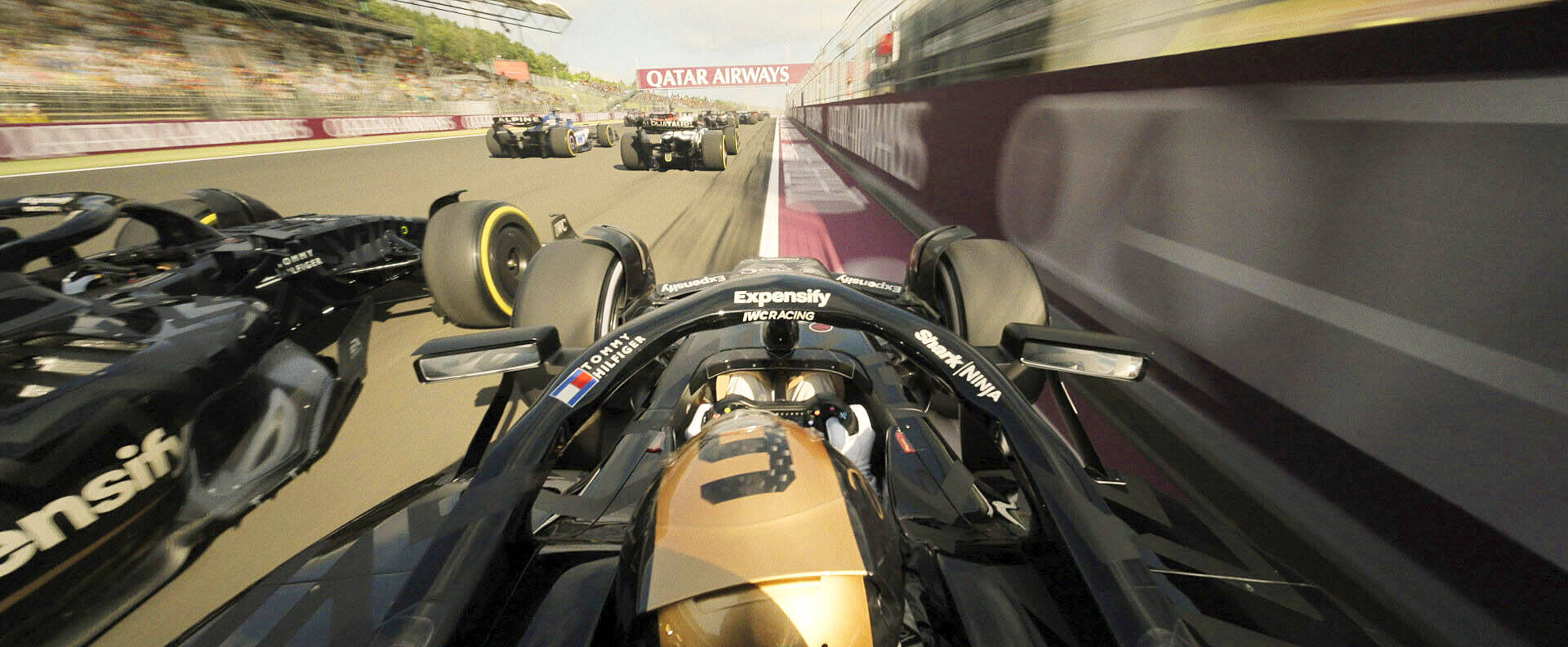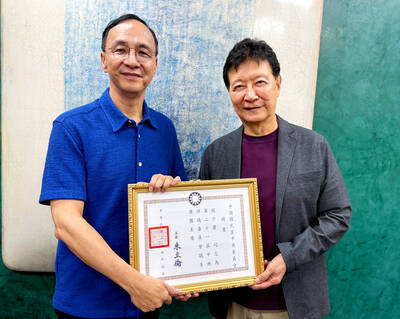The wide-screen spectacle of Formula One gets a gleaming, rip-roaring workout in Joseph Kosinski’s F1, a fine-tuned machine of a movie that, in its most riveting racing scenes, approaches a kind of high-speed splendor.
Kosinski, who last endeavored to put moviegoers in the seat of a fighter jet in Top Gun: Maverick, has moved to the open cockpits of Formula One with much the same affection, if not outright need, for speed. A lot of the same team is back. Jerry Bruckheimer produces. Ehren Kruger, a co-writer on Maverick, takes sole credit here. Hans Zimmer, a co-composer previously, supplies the thumping score.
And, again, our central figure is an older, high-flying cowboy plucked down in an ultramodern, gas-guzzling conveyance to teach a younger generation about old-school ingenuity and, maybe, the enduring appeal of denim.

Photo: AppleTV+ via AP
But whereas Tom Cruise is a particularly forward-moving action star, Brad Pitt, who stars as the driving-addicted Sonny Hayes in F1, has always been a more arrestingly poised presence. Think of the way he so calmly and half-interestedly faces off with Bruce Lee in Quentin Tarantino’s Once Upon a Time... in Hollywood.
In the opening scene of F1, he’s sleeping in a van with headphones on when someone rouses him. He splashes some water on his face and walks a few steps over to the Daytona oval, where he quickly enters his team’s car, in the midst of a 24-hour race. Pitt goes from zero to 180 miles per hour in a minute.
Sonny, a long-ago phenom who crashed out of Formula One decades earlier and has since been racing any vehicle, even a taxi, he can get behind the wheel of, is approached by an old friend, Ruben Cervantes (Javier Bardem) about joining his flagging F1 team, APX. Sonny turns him down at first but, of course, he joins and F1 is off to the races.

Photo: AppleTV+ via AP
The title sequence, exquisitely timed to the syncopated rhythms of Zimmer’s score, is a blistering introduction. The hotshot rookie driver Noah Pearce (Damson Idris) is just running a practice lap, but Kosinski, his camera adeptly moving in and out of the cockpit, uses the moment to plunge us into the high-tech world of Formula One, where every inch of the car is connected to digital sensors monitored by a watchful team. Here, that includes technical director Kate McKenna (Kerry Condon) and Kaspar Molinski (Kim Bodnia), the team’s chief.
Verisimilitude is of obvious importance to the filmmakers, who bathe this very Formula One-authorized film in all the sleek operations and globe-trotting spectacle of the sport. That Apple, which produced the film, would even go for such a high-priced summer movie about Formula One is a testament to the upswing in popularity of a sport once quite niche in America, and of the halo effects of both the Netflix series Formula 1: Drive to Survive and the much-celebrated driver Lewis Hamilton, an executive producer on F1.
Whether F1 pleases diehards I’ll leave to more ardent followers of the circuit. But what I can say definitively is that Claudio Miranda knows how to shoot it. The cinematographer, who has shot all of Kosinski’s films as well as wonders like Ang Lee’s Life of Pi, brings Formula One to vivid, visceral life. When F1 heads to the big races, Miranda is always simultaneously capturing the zooming cars from the asphalt while backgrounding it with the sweeping spectacle of a course like the UK’s fabled Silverstone Circuit.
OK, you might be thinking, so the racing is good; is there a story? There’s what I’d call enough of one, though you might have to go to the photo finish to verify that. When Sonny shows up, and rapidly turns one practice vehicle into toast, it’s clear that he’s going to be an agent of chaos at APX, a low-ranking team that’s in heavy debt and struggling to find a car that performs.
This gives Pitt a fine opportunity to flash his charisma, playing Sonny as an obsessive who refuses any trophy and has no real interest in money, either. The flashier, media-ready Noah watches Sonny’s arrival with skepticism, and the two begin more as rivals than teammates. Idris is up to the mano-a-mano challenge, but he’s limited by a role ultimately revolving around — and reducing to — a young Black man learning a lesson in work ethic.
A relationship does develop, but F1 struggles to get its characters out of the starting blocks, keeping them closer to the cliches they start out as. The actor who, more than anyone, keeps the momentum going is Condon, playing an aerodynamics specialist whose connection with Pitt’s Sonny is immediate. Just as she did in between another pair of headstrong men in The Banshees of Inisherin, Condon is a rush of naturalism.
If there’s something preventing F1 from hitting full speed, it’s its insistence on having its characters constantly voice Sonny’s motivations. The same holds true on the race course, where broadcast commentary narrates virtually every moment of the drama. That may be a necessity for a sport where the crucial strategies of hot tires and pit-stop timing aren’t quite household concepts. But the best car race movies — from Grand Prix to Senna to Ferrari — know when to rely on nothing but the roar of an engine.
F1 steers predictably to the finish line, cribbing here and there from sports dramas before it (Tobias Menzies plays a board member with uncertain corporate goals). When F1 does, finally, quiet down, for one blissful moment, the movie, almost literally, soars. It’s not quite enough to forget all the high-octane macho dramatics before it, but it’s enough to glimpse another road F1 might have taken.

Last week the story of the giant illegal crater dug in Kaohsiung’s Meinong District (美濃) emerged into the public consciousness. The site was used for sand and gravel extraction, and then filled with construction waste. Locals referred to it sardonically as the “Meinong Grand Canyon,” according to media reports, because it was 2 hectares in length and 10 meters deep. The land involved included both state-owned and local farm land. Local media said that the site had generated NT$300 million in profits, against fines of a few million and the loss of some excavators. OFFICIAL CORRUPTION? The site had been seized

Next week, candidates will officially register to run for chair of the Chinese Nationalist Party (KMT). By the end of Friday, we will know who has registered for the Oct. 18 election. The number of declared candidates has been fluctuating daily. Some candidates registering may be disqualified, so the final list may be in flux for weeks. The list of likely candidates ranges from deep blue to deeper blue to deepest blue, bordering on red (pro-Chinese Communist Party, CCP). Unless current Chairman Eric Chu (朱立倫) can be convinced to run for re-election, the party looks likely to shift towards more hardline

Sept. 15 to Sept. 21 A Bhutanese princess caught at Taoyuan Airport with 22 rhino horns — worth about NT$31 million today — might have been just another curious front-page story. But the Sept. 17, 1993 incident came at a sensitive moment. Taiwan, dubbed “Die-wan” by the British conservationist group Environmental Investigation Agency (EIA), was under international fire for being a major hub for rhino horn. Just 10 days earlier, US secretary of the interior Bruce Babbitt had recommended sanctions against Taiwan for its “failure to end its participation in rhinoceros horn trade.” Even though Taiwan had restricted imports since 1985 and enacted

Enter the Dragon 13 will bring Taiwan’s first taste of Dirty Boxing Sunday at Taipei Gymnasium, one highlight of a mixed-rules card blending new formats with traditional MMA. The undercard starts at 10:30am, with the main card beginning at 4pm. Tickets are NT$1,200. Dirty Boxing is a US-born ruleset popularized by fighters Mike Perry and Jon Jones as an alternative to boxing. The format has gained traction overseas, with its inaugural championship streamed free to millions on YouTube, Facebook and Instagram. Taiwan’s version allows punches and elbows with clinch striking, but bans kicks, knees and takedowns. The rules are stricter than the